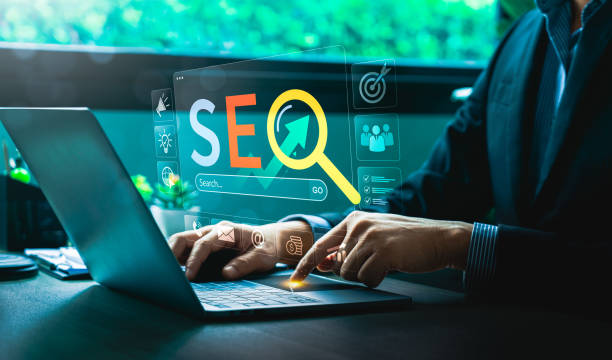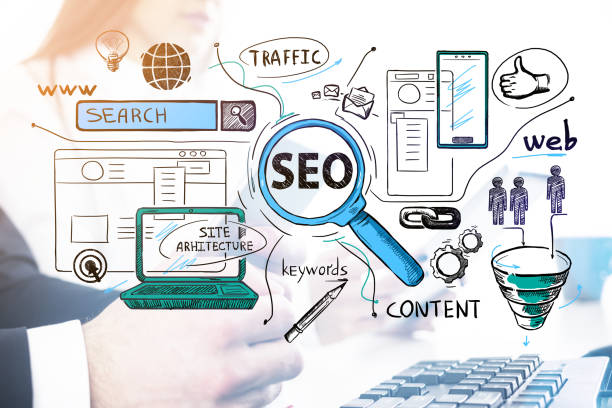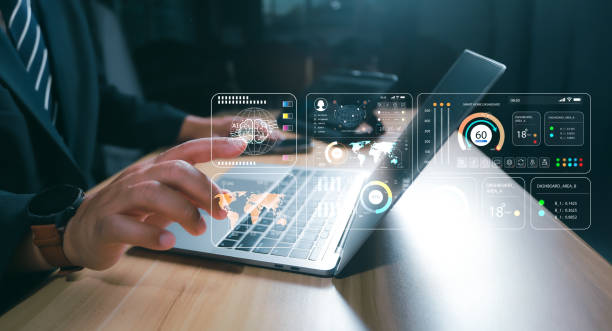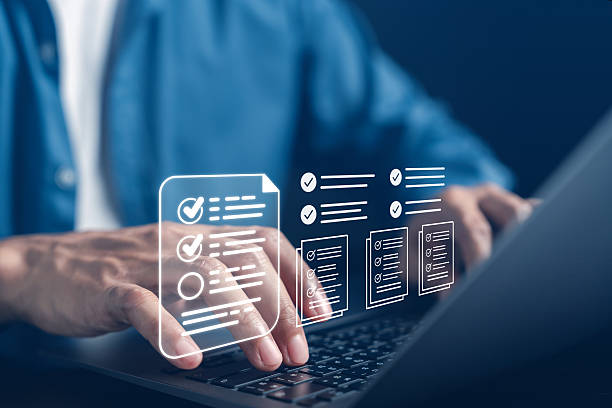What is On-Page SEO and why is it important?

What is On-Page SEO and why is it important?
#On-Page SEO (On-Page SEO) refers to a set of techniques and actions performed to optimize website pages to improve their ranking in search results (SERP).
These actions include content optimization, site structure, keyword usage, and user experience improvement.
The importance of On-Page SEO lies in helping search engines better understand the site’s content and display it to users looking for relevant information.
A strong On-Page SEO strategy can significantly increase organic website traffic, leading to increased sales and revenue.
On-Page SEO is considered a fundamental basis for any successful SEO strategy.
By improving On-Page SEO, your site will have a greater chance of achieving top rankings in search results.
This means increased visibility to target audiences and a higher probability of clicks on your site’s link.
Website On-Page SEO plays a key role in the implementation of online store websites by increasing website traffic.
Did you know that 94% of users’ first impressions of a business are related to its website design? With professional corporate website design by **Rasaweb**, turn this first impression into an opportunity for growth.
✅ Attract more customers and increase sales
✅ Build credibility and trust in the eyes of the audience⚡ Get free website design consultation!
Keyword Research – The First Step in On-Page SEO

Keyword Research – The First Step in On-Page SEO
Keyword research is the starting point for any effective On-Page SEO strategy.
The goal of this process is to identify the words and phrases users employ to search for products, services, or information related to your business.
By understanding these keywords, you can optimize your site’s content to achieve higher rankings in search results for those terms.
Various tools are available for keyword research, including Google Keyword Planner, Ahrefs, SEMrush, and Moz Keyword Explorer.
Using these tools helps you identify search volume, competition, and related keywords.
After identifying keywords, you should strategically use them in your site’s content, including titles, meta descriptions, main text, and image alt tags.
Remember that excessive use of keywords (keyword stuffing) can lead to penalties from search engines.
Perform keyword research regularly to stay informed about changes in user search behavior.
Optimizing Titles and Meta Descriptions

Optimizing Titles and Meta Descriptions
Title Tags and Meta Descriptions are among the most important elements of On-Page SEO, helping search engines and users better understand your page’s content.
Titles are displayed at the top of the browser page and in search results, while meta descriptions provide a summary of the page’s content below the title in search results.
To optimize titles, you should place the page’s main keyword at the beginning of the title and use attractive, descriptive titles that encourage users to click.
Title length should be between 50 and 60 characters.
Meta descriptions should also provide a precise and engaging summary of the page’s content and encourage users to visit the page.
Meta description length should be between 150 and 160 characters.
Ensure that each page on your site has a unique title and meta description.
Failure to optimize titles and meta descriptions can lead to a decrease in click-through rate (CTR) and, consequently, a drop in site ranking in search results.
| Element | Description | Best Practices |
|---|---|---|
| Title Tag | The page title displayed in search results. | Includes main keyword, attractive and descriptive, 50-60 characters long. |
| Meta Description | A short summary of the page content displayed in search results. | Engaging and accurate, encourages clicks, 150-160 characters long. |
Content Optimization – The King of On-Page SEO

Content Optimization – The King of On-Page SEO
Content is king! This phrase is very common in the world of SEO and refers to the importance of content in website rankings.
To optimize content, you must produce high-quality, valuable, and relevant content that meets user needs.
Your content should answer user questions and provide comprehensive information on the topic.
Ensure you use keywords naturally in your content and avoid excessive repetition.
Regularly update your content and use images, videos, and other multimedia elements to make it more engaging.
Organize your content structure well, using headings, subheadings, and short paragraphs for better readability.
Longer content usually ranks better in search results, but ensure that content length does not compromise its quality.
Content optimization for On-Page SEO is an ongoing process and should be performed regularly.
Does your current online store design not generate the sales you expect?
Rasaweb is an expert in professional online store design!
✅ An attractive and user-friendly site aimed at increasing sales
✅ High speed and security for an ideal shopping experience⚡ Get a free online store design consultation with Rasaweb!
Image Optimization – Increasing Speed and Improving User Experience

Image Optimization – Increasing Speed and Improving User Experience
Images play an important role in a site’s visual appeal and user experience, but if not optimized correctly, they can slow down page load times and negatively impact SEO.
To optimize images, you should use appropriate formats (such as JPEG for colorful images and PNG for simple graphics), reduce image size without compromising quality, and use the Alt Text feature to describe images to search engines.
Alt Text helps search engines understand image content and display it in search results.
Image file names should also be descriptive and include relevant keywords.
Using Content Delivery Networks (CDNs) can help improve image loading speed.
Ensure your site’s images are responsive and display correctly on various devices.
Improving Site Structure – Creating a Roadmap for Search Engines
![]()
Improving Site Structure – Creating a Roadmap for Search Engines
Site structure plays a crucial role in how easily search engines can crawl and index your site’s pages.
A good site structure should be logical, hierarchical, and user-friendly.
Important pages of the site should be easily accessible from the homepage.
Use navigation menus, breadcrumbs, and internal links to create a roadmap for search engines and users.
Site URLs should be short, descriptive, and include relevant keywords.
Creating an XML sitemap helps search engines quickly identify and index all pages on the site.
Ensure your site has a robots.txt file that allows search engines to crawl or ignore specific pages.
Internal Linking – Creating Connections Between Site Pages

Internal Linking – Creating Connections Between Site Pages
Internal linking refers to creating links between different pages within a website.
Internal linking helps search engines better understand the site’s structure, identify important pages, and distribute link value among different pages.
Internal links should be relevant and natural, guiding users to related and useful pages.
Use descriptive anchor text that is relevant to the destination page.
Internal linking can help improve site ranking in search results and increase organic traffic.
Avoid creating excessive internal links and ensure that each internal link has a clear purpose.
Internal linking is considered one of the most important parts of On-Page SEO.
| Feature | Internal Linking | External Linking |
|---|---|---|
| Link Source | Your own website pages | Other websites |
| Control | Full control | Limited control |
| Goal | Improve website structure and navigation | Increase website authority and ranking |
| Risk | Low | Higher (requires source credibility check) |
Website Speed Optimization – Improving User Experience and SEO

Website Speed Optimization – Improving User Experience and SEO
Site speed is one of the important factors in website ranking by search engines.
Users who have to wait a long time for a page to load are likely to leave the site and look for another.
Slow site speed can lead to decreased conversion rates and reduced sales.
To optimize site speed, you should use optimized images, compress CSS and JavaScript files, use caching, and utilize a high-quality hosting provider.
Various tools are available for testing site speed, including Google PageSpeed Insights and GTmetrix.
By using these tools, you can identify site speed issues and find appropriate solutions to resolve them.
Do you have an online store, but your sales are not as expected? Rasaweb, with its professional online store designs, solves your problem forever!
✅ Significant increase in conversion rates and sales
✅ Exceptional user experience for your customers
⚡ Click to get a free consultation with Rasaweb!
Responsive Design (Responsive Design) – Compatibility with Various Devices

Responsive Design (Responsive Design) – Compatibility with Various Devices
With the increasing use of mobile devices for internet searching, responsive design has become a necessity.
Responsive design means that your site should automatically adapt to the screen size of various devices (such as computers, tablets, and mobile phones).
Google considers responsive design a ranking factor.
Sites with responsive design provide a better user experience and are likely to achieve higher rankings in search results.
To ensure your site is responsive, you can use Google’s Mobile-Friendly Test tool.
Measuring and Analyzing On-Page SEO Results

Measuring and Analyzing On-Page SEO Results
Measuring and analyzing On-Page SEO results is essential for understanding the effectiveness of SEO strategies and identifying strengths and weaknesses.
Various tools are available for measuring and analyzing SEO results, including Google Analytics and Google Search Console.
Using these tools, you can monitor organic site traffic, keyword rankings, click-through rate (CTR), and other important metrics.
Based on the analysis results, you can improve your SEO strategies and achieve better outcomes.
Measuring and analyzing SEO results is a continuous process and should be performed regularly.
On-Page SEO optimization without data analysis is effectively shooting in the dark.
Frequently Asked Questions
| Row | Question | Answer |
|---|---|---|
| 1 | What is On-Page SEO? | On-Page SEO refers to a set of actions performed within the website (on its pages) to improve its ranking in search engine results. This includes optimizing content, site structure, and HTML codes. |
| 2 | Why is On-Page SEO important? | On-Page SEO helps search engines better understand page content and determine if that page is relevant and valuable for user searches. This better understanding leads to higher rankings. |
| 3 | What is the first and most important step in On-Page SEO? | Keyword Research is the most important initial step. By finding appropriate keywords, targeted content relevant to user needs can be produced. |
| 4 | What is the role of the Title Tag in On-Page SEO? | The title tag is one of the most important ranking factors and should include the main keyword. This tag is displayed as the page title in search results and affects the click-through rate (CTR). |
| 5 | What is the importance of the Meta Description? | The meta description does not directly impact ranking, but by providing an attractive summary of the page’s content in search results, it can encourage users to click, thereby increasing the click-through rate (CTR). |
| 6 | Why is using headings (H1, H2, etc.) important in content? | Headings help structure content and improve readability for users and search engine crawlers. Using keywords in headings also helps search engines better understand the topic. |
| 7 | What does Image Optimization in On-Page SEO include? | It includes compressing images to reduce size, using descriptive and relevant file names, and filling the Alt tag (alternative text) with relevant keywords to help search engines understand the image content. |
| 8 | What is Internal Linking in On-Page SEO? | Internal linking refers to creating links between different pages of a website. This helps distribute page authority (Link Equity), improve user experience, and assist search engine crawlers in discovering new pages. |
| 9 | Why is Page Speed important for On-Page SEO? | Page speed is a direct ranking factor and significantly impacts user experience. Slow pages can lead to an increased bounce rate and decreased user engagement. |
| 10 | What role does quality content play in On-Page SEO? | High-quality, comprehensive, unique, and valuable content for the user, is the core of On-Page SEO. This content not only attracts and retains users but also sends positive signals to search engines, helping achieve better rankings. |
And other services of Rasa Web Advertising Agency in the field of advertising
- Smart Content Strategy: An exclusive service for growth and increasing click-through rates based on user experience customization.
- Smart Conversion Rate Optimization: A creative platform to improve sales increase through intelligent data analysis.
- Smart Brand Identity: A creative platform to improve customer acquisition through intelligent data analysis.
- Smart Advertising Campaign: Professional optimization for user engagement using precise audience targeting.
- Smart Link Building: A fast and efficient solution for customer acquisition with a focus on marketing automation.
And over hundreds of other services in the field of online advertising, advertising consulting, and organizational solutions.
Internet Advertising | Advertising Strategy | Advertorials
Resources
Complete Guide to On-Page SEO
Key On-Page SEO Techniques
Common Mistakes in On-Page SEO
On-Page SEO: From Zero to Hundred
💡 In today’s fast-paced and competitive world, a powerful online presence is paramount. Rasaweb Afarin Digital Marketing Agency, specializing in SEO, content marketing, and responsive website design, assists your business on its path to growth and success.
📍 Tehran, Mirdamad Street, next to Central Bank, Southern Kazeroon Alley, Ramin Alley, No. 6


